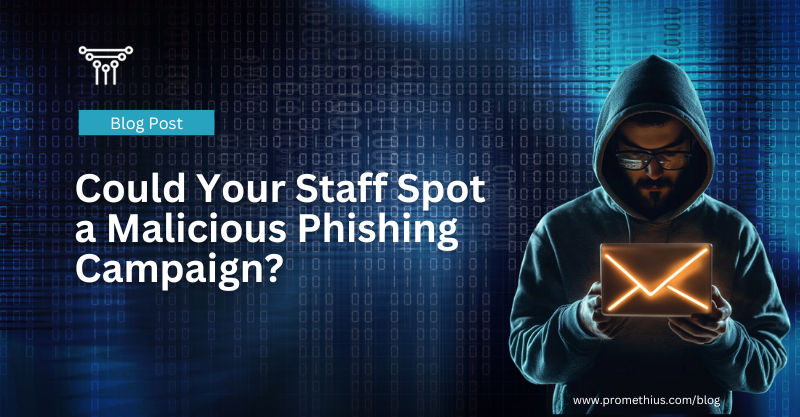- in Security by Tony Valle
Could Your Staff Spot a Malicious Phishing Campaign?

In today's digital age, phishing has become one of the most prevalent and dangerous cyber threats. Phishing campaigns are designed to deceive individuals into divulging sensitive information, such as login credentials, financial details, or personal data. These attacks can have devastating consequences for both individuals and organizations.
More...
Could your staff spot a malicious phishing campaign? Let's explore why phishing is a significant risk, examine some famous cases of phishing breaches, and discuss three effective ways to educate your staff on phishing dangers.
Why Phishing is a Dangerous Risk
Phishing is a dangerous risk for several reasons. Firstly, it exploits human psychology. Attackers craft convincing emails or messages that appear to come from trusted sources, such as colleagues, banks, or popular services. These messages often create a sense of urgency, prompting recipients to act quickly without verifying the authenticity of the request. Secondly, phishing attacks can lead to severe financial losses. Once attackers gain access to sensitive information, they can steal money, commit identity theft, or sell the data on the dark web.
Lastly, phishing can cause significant reputational damage. If an organization falls victim to a phishing attack, it can lose the trust of its customers, partners, and stakeholders. Laws these days are such that you need to report breaches to your customers. Nobody wants the shame of sending that “we accidentally shared your data” email.
Famous Cases of Phishing Breaches
Part of the challenge with educating your staff against phishing attacks is that sometimes people don’t REALLY believe such attacks happen with any regularity. Of course if they feel that way, they are totally misguided and naïve.
Several high-profile phishing breaches have made headlines over the years, highlighting the severe impact of these attacks:
- Sony Pictures (2014): In November 2014, the criminal hacking group 'Guardians of Peace' launched a phishing attack on Sony Pictures. They sent phishing emails to top executives, including CEO Michael Lynton, which appeared to be from Apple. The emails requested ID verification and redirected the recipients to a bogus site that captured their login credentials. The attackers accessed a trove of data, including private correspondences and information about unreleased films.
- Crelan Bank (2016): In January 2016, the Belgian firm Crelan Bank fell victim to a phishing scam. An attacker spoofed the email account of the organization's CEO and emailed an employee, asking them to transfer funds into an account controlled by the attacker. The incident resulted in damages of €75.6 million.
- Google and Facebook (2013-2015): Between 2013 and 2015, Evaldas Rimasauskas scammed Google and Facebook out of $100 million through a sophisticated phishing operation. This attack highlights the vulnerability of even the largest tech companies to phishing attacks1.

Three Ways to Better Educate Your Staff on Phishing
- Regular Training and Simulations: Conduct regular training sessions to educate employees about the latest phishing tactics and how to recognize them. Here in Indianapolis, Promethius regularly conducts on-premises training against phishing attacks.
Use simulated phishing attacks to test their awareness and response. This hands-on approach helps employees practice identifying and reporting suspicious emails in a safe environment. Let us know if you would like help in setting up an automated testing plan. - Clear Communication Channels: Establish clear communication channels for reporting suspected phishing attempts. Encourage employees to verify any unusual requests by contacting the sender through a different medium, such as a phone call or a separate email. This verification step can prevent many phishing attacks from succeeding.
- Promote a Culture of Vigilance: Foster a culture of vigilance where employees feel responsible for cybersecurity. Regularly remind them of the importance of being cautious with emails and messages, especially those that request sensitive information or prompt immediate action. Reinforce the idea that cybersecurity is a shared responsibility. If you distribute an internal newsletter to staff, use it to regularly preach on the importance of vigilance.
At the end of the day, phishing is a significant threat that can have severe consequences for organizations. Hopefully this article has helped you understand the risks, learn from famous cases, and plan to implement effective training and communication strategies to better equip your staff to spot and respond to malicious phishing campaigns. Remember, a well-informed and vigilant workforce is your first line of defense against phishing attacks.
